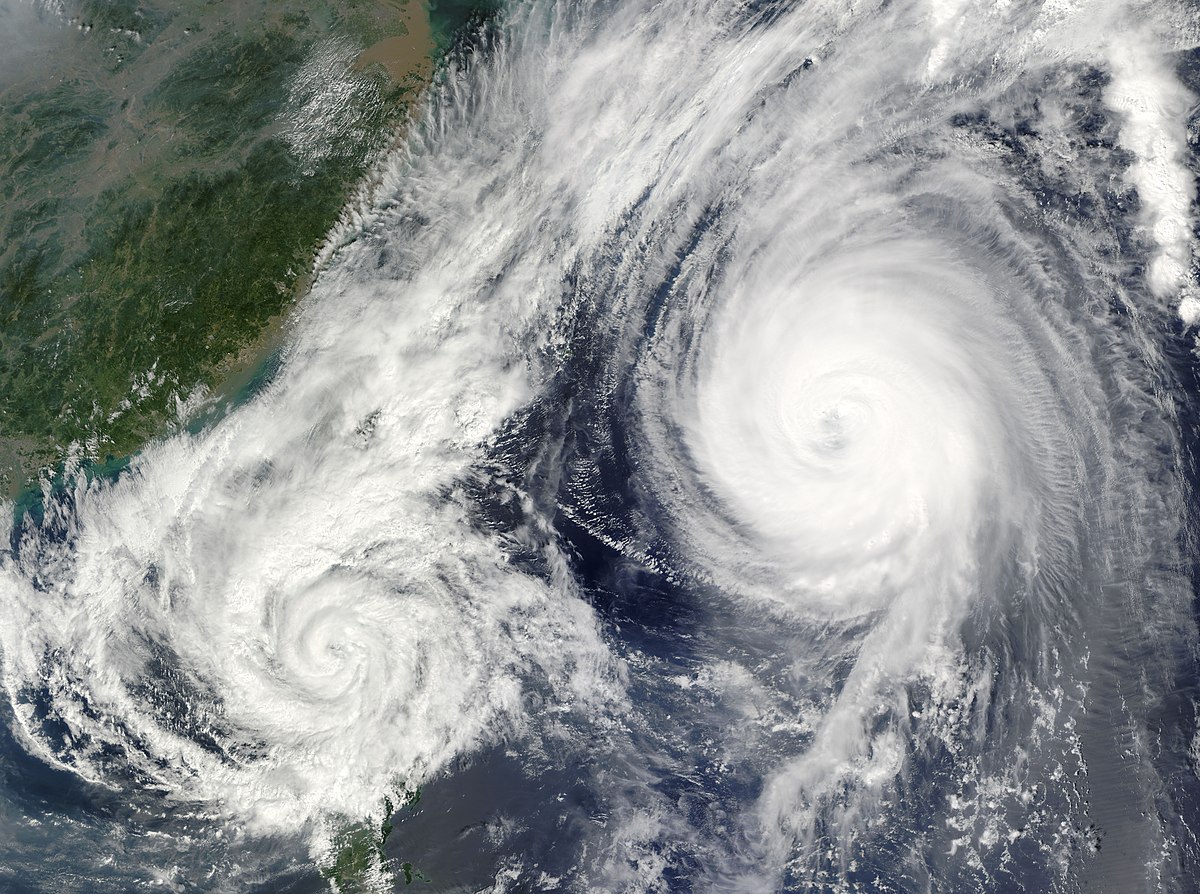September 4, 2023
The Fujiwhara Effect-Cyclonic Dance and its Impact on Weather

Introduction:
- The Fujiwhara effect, a captivating meteorological phenomenon, occurs when two hurricanes or cyclones spinning in the same direction draw close to each other, engaging in an intricate dance around a shared center.
- This interaction can lead to various outcomes, including one cyclone overpowering the other, their merger, or a temporary spinning dance before they diverge.
- This effect has gained attention due to its relevance in the face of climate change, which is intensifying cyclone frequency and strength.
- In this article, we delve into the intricacies of the Fujiwhara effect, its historical context, recent occurrences, and its connections to the changing climate.
Understanding the Fujiwhara Effect:
- The Fujiwhara effect is a captivating phenomenon where two cyclones, when brought into proximity, initiate an intense dance around their common center.
- As elaborated by the National Weather Service (NWS), if one cyclone is more potent, it may dominate and absorb the weaker one.
- Conversely, cyclones of similar strength can either merge or engage in a spinning dance before resuming their separate trajectories.
- The most remarkable outcome is the fusion of two cyclones, leading to the formation of a mega cyclone capable of causing significant coastal devastation.
- The phenomenon was named after Sakuhei Fujiwhara, a Japanese meteorologist, who first mentioned it in a 1921 paper. It was later observed in 1964 when typhoons Marie and Kathy merged over the western Pacific Ocean.
The Impact of the Dance:
- Recent instances of the Fujiwhara effect have left their mark on different regions. A notable event occurred in March 2023, when the Bay Area and other parts of California faced powerful winds resulting from this phenomenon.
- Winds reaching peak gusts of 60 to 75 mph were reported, leading to uprooted trees, shattered windows, and power disruptions.
- Hurricane scientist David Longshore noted that the effect could intensify a cyclone’s primary circulation due to increased heat, moisture, and positive vorticity.
- Moreover, this phenomenon adds complexity to cyclone prediction, as each interaction between storm systems is distinct and challenging to model within current climate predictions.
The Fujiwhara Effect and Climate Change:
- Experts are drawing attention to the growing occurrence of the Fujiwhara effect, linking it to a warming planet and rising ocean temperatures.
- With a rapidly warming world, cyclones are becoming more frequent and intense. Ravi Shankar Pandey, a researcher at the Department of Atmospheric Science at the National Central University, highlights the trend.
- He points out that between 2013 and 2017, the northwest Pacific Ocean witnessed ten instances of the Fujiwhara effect, attributed to the increasing strength of typhoons.
- This intensification is linked to a 35% rise in the strength of typhoons hitting Taiwan from 1977 to 2016, driven by a 0.4 to 0.7°C increase in sea surface temperature in the northwest Pacific.
The Conclusion:
- The Fujiwhara effect, characterized by the mesmerizing dance of cyclones, highlights the intricate dynamics of the Earth’s atmosphere.
- Its significance in understanding and predicting cyclone behavior has become more pronounced as climate change leads to stronger and more frequent cyclones.
- The phenomenon’s association with rising sea temperatures and the intensification of cyclones underscores the complex interplay between weather patterns and global warming.
- As we continue to grapple with the consequences of a changing climate, the Fujiwhara effect serves as a compelling reminder of the planet’s interconnected systems and the need for ongoing research and adaptation strategies.
Daily Gist : The Hindu/Indian Express : 30 Jan 2025
January 30, 2025
Gist of editorial : the Hindu/ Indian Express/20 Jan 2025
January 20, 2025
Daily the Hindu/ Indian Express Editorial Gist: 14 Jan 2025
January 14, 2025
